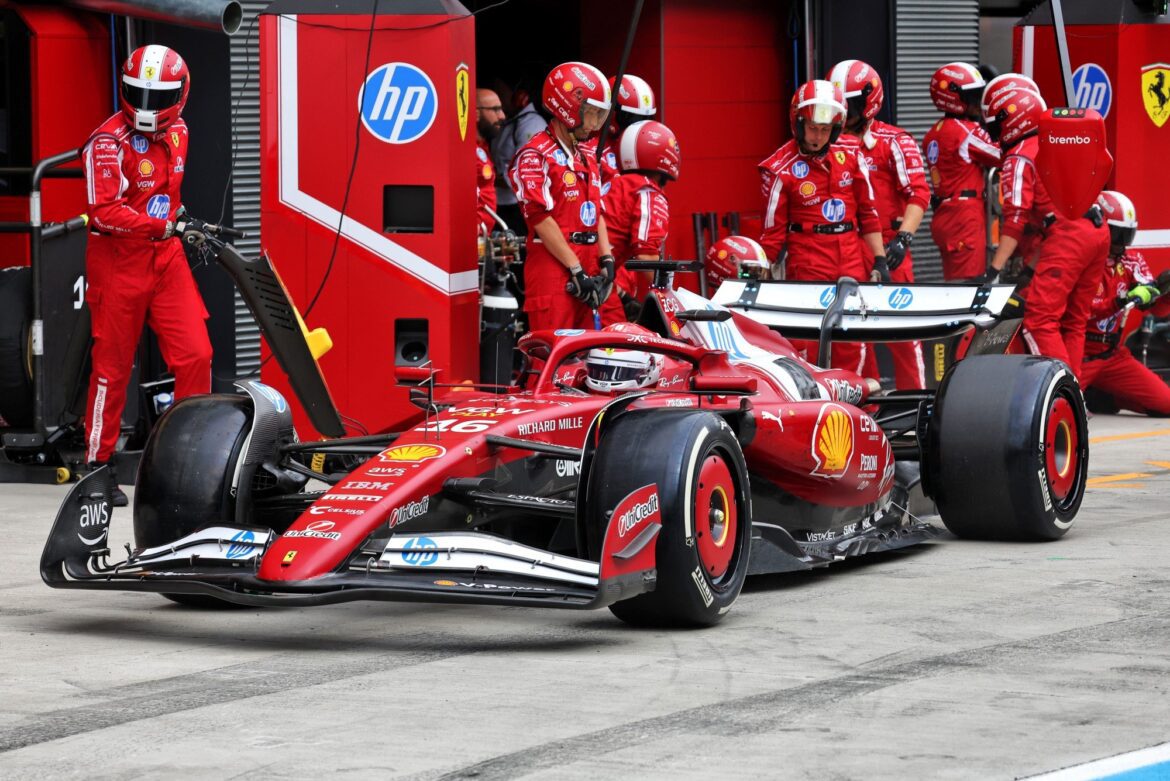Ferrari’s Bold Approach to the Future of Formula 1: Testing Innovations for 2026 Regulations
Ferrari is making significant strides towards the future of Formula 1 by conducting innovative tests aimed at the 2026 regulations. A major highlight of these new regulations is the introduction of a "movable front wing," which will be featured in the upcoming car models. Unlike many other teams that have preferred to rely on simulators for their preparations, Ferrari has opted for a hands-on approach by taking a physical device to the track.
A Unique Testing Strategy
Earlier this week, Ferrari participated in a tire test organized by Pirelli at the Hungaroring, showcasing their commitment to advancing their car design ahead of the new regulatory framework. The Italian team utilized a "mule car," derived from the SF-25 model, to simulate the conditions of the 2026 vehicle. This pragmatic choice underscores Ferrari’s intention to closely replicate the performance characteristics and handling of their future cars.
During earlier tests in June, the team already made significant modifications to their prototype, including a switch from a push-rod suspension to a pull-rod system. This change was pivotal as it allowed them to assess how the new tires, designed for 2026, performed under wet track conditions. By adapting their testing methodology, Ferrari aims to gather real-world data that could enhance their competitive edge in the forthcoming seasons.
Advancements in Aerodynamic Technology
On Wednesday, Ferrari took a significant step forward with their testing of the new movable front wing system. Unlike its predecessor, which required manual adjustments to change the wing’s angle of incidence, the new design incorporates hydraulic controls. This innovative mechanism marks a notable advancement in aerodynamic technology, enabling the driver to adjust the wing’s position dynamically while on the track.
Charles Leclerc, one of Ferrari’s star drivers, participated in this critical testing phase. His experience with the new system offered valuable insights into the potential aerodynamic benefits that the 2026 cars could provide. The ability to manipulate the front wing in real-time could significantly influence both speed and handling, presenting opportunities for strategic advantages during races.
Differentiating from Competitors
While Ferrari has embraced this hands-on approach to testing, other teams have taken a more conservative route. Many opted not to allocate resources for such advanced testing, believing that the data obtained would not accurately represent the performance of the cars that will compete next year. This divergence in strategy highlights Ferrari’s willingness to invest in cutting-edge technology and collaborate closely with Pirelli, which could prove crucial for their competitive positioning in the 2026 season.
Ferrari’s strategy reflects a broader commitment to innovation and performance enhancement. By focusing on the development of new technologies, the team is not only preparing for the upcoming regulations but also positioning itself to thrive in a rapidly evolving motorsport landscape. The integration of advanced aerodynamic features like the movable front wing could be a game-changer, making their cars more agile and responsive on the track.
Collaboration with Pirelli
Ferrari’s collaboration with tire manufacturer Pirelli is another critical component of their strategy. By working closely with Pirelli, the team is gaining insights into how the new tire specifications will interact with the redesigned car dynamics. This partnership is essential, as tire performance is a key factor in achieving optimal lap times and overall race performance.
During the tire tests at Hungaroring, Ferrari focused on evaluating how the 2026 tires performed under varying conditions. This hands-on approach allowed the team to gather practical data that simulations alone could not provide. Such thorough testing is vital for ensuring that the car’s setup and tire performance are finely tuned for maximum efficiency on race day.
A Commitment to Innovation
Ferrari’s proactive approach in embracing new technologies and testing methodologies reflects a deep commitment to innovation. The introduction of the movable front wing is just one of the many changes expected in the 2026 regulations, and Ferrari is determined to be at the forefront of these advancements. By investing time and resources into real-world testing, the team hopes to refine their designs and enhance their overall performance.
The 2026 regulations are set to bring about significant changes in Formula 1, and Ferrari appears poised to adapt and thrive in this new environment. With their focus on advanced aerodynamic technologies and a willingness to explore new possibilities, the team is laying the groundwork for success in the coming seasons.
Preparing for a Competitive Future
As the landscape of Formula 1 evolves, Ferrari’s preparation for the 2026 regulations is a testament to their resilience and determination. The team’s willingness to take risks and invest in innovative solutions could very well define their trajectory in the highly competitive racing world.
In the coming months, as the regulations continue to take shape, Ferrari’s ongoing efforts to refine their car and its technologies will be closely watched. The team’s commitment to performance and innovation will not only impact their chances on the track but could also set new benchmarks for excellence in the sport.
In summary, Ferrari is making significant strides towards the future of Formula 1. Through innovative testing and a focus on advanced technologies like the movable front wing, the team is not only preparing for the 2026 regulations but is also setting the stage for future success. Their collaborative efforts with Pirelli and their hands-on approach to testing distinguish them from competitors, emphasizing their commitment to excellence and innovation in Formula 1 racing.
